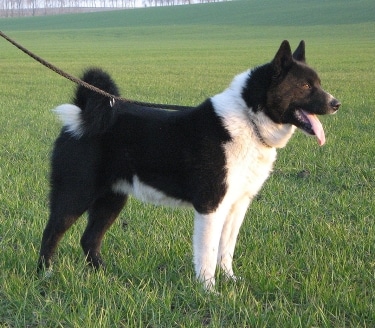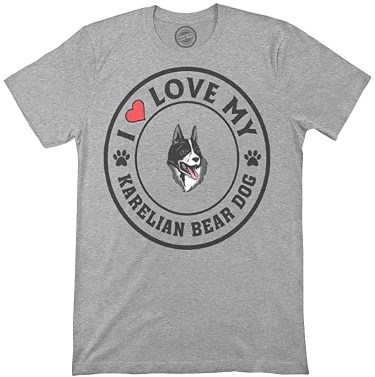
The Karelian Bear Dog (Finnish: Karjalankarhukoira) is a mid-sized spitz regarded as a national treasure in Finland where it is one of the top 10 breeds.
The Karelian Bear Dog originated from the Komi crossbred with hunting dogs from Lagoda’s Karelia, Olonets, and Russian East Karelia. Development of the breed began in 1936 and the first standard was established in 1945
It is traditionally used to hunt small fur-bearing animals, such as squirrels and marten, but, like its Scandinavian neighbor the Norwegian Elkhound, it can also tackle moose, lynx and wolf. The Karelian Bear Dog was named after its superior ability to harass and distract the enormous Eurasian brown bear before the hunter came in for the kill.
In 2004, Karelian Bear Dogs were brought to Karuizawa, Japan, a popular resort 105 miles (170 km) northwest of Tokyo, where they reduced the number of bear incidents from 255 in 2006 to only four in 2017.
Weight: Male: 44–51 lbs (20–23 kg) Female: 44–51 lbs (20–23 kg)
Height: Male: 21–24 inches (54–60 cm) Female: 19–22 inches (49–55 cm)
Coat: Short, dense, straight.
Color: Black, Black & White.
Life span: 11-13 years
Temperament: Cautious, Tenacious, Independent, Loyal, Brave, Territorial.
Health: Generally healthy dog. Some may be susceptible to hip dysplasia, dental problems, and eye problems.
Special Interest:
• Very loyal, but aggressive towards other animals and strangers.
• Used for bear control at Yosemite and Glacier national parks.
• A silent hunter who only barks once the game is stopped or treed.
Classifications:
AKC: FSS
CKC: Group 3 – Working Dogs
UKC: Northern Breed
FCI: Group 5 Spitz and Primitive dogs, Section 2 Nordic Hunting Dogs #48
 Kennel.com – Complete Guide to Dogs The Dog Lovers Guide
Kennel.com – Complete Guide to Dogs The Dog Lovers Guide
 I LOVE MY KARELIAN BEAR DOG
I LOVE MY KARELIAN BEAR DOG